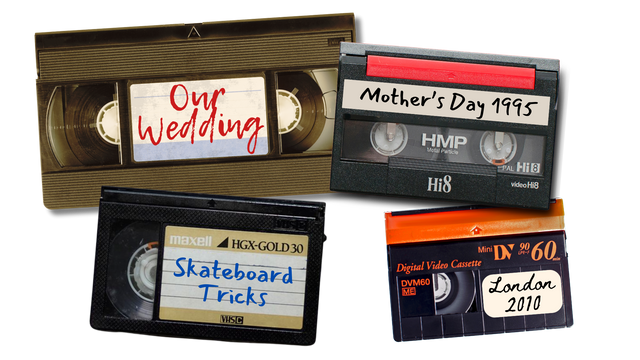Why Digitize Photo Slides Now
Many families still treasure boxes of old 35mm slides tucked away in closets and attics. These slides capture vacations, holidays, weddings, and moments that defined a generation. But physical slides are fragile. Exposure to humidity, dust, light, and temperature changes can damage the film, fading colors and making details harder to see. That's why now is the perfect time to convert photo slides to digital and protect these irreplaceable images.
With digital copies, you not only preserve your family's history, but you also make it easy to share those memories with children, grandchildren, and friends. A simple click can bring long-forgotten moments back into your daily life, ready to spark joy and conversation.
How to Scan 35mm Slides at Home
Many people wonder how to scan slides themselves. There are small consumer-grade slide scanners available, which can work for small projects if you have the time and patience. However, scanning slides properly requires attention to detail:
- Cleaning each slide carefully to remove dust
- Choosing the correct resolution to capture fine detail
- Adjusting color balance to restore faded tones
Even with home equipment, it can be difficult to match the quality of professional scans. That's why many people turn to America's best photo scanning service to handle this delicate process.

Turning Slides into Digital Without Damaging Originals
One common concern is whether scanning will harm the original slides. When done properly, the scanning process is completely safe. High-end equipment gently holds each slide in place, and professional technicians ensure no scratches or heat damage occur. After scanning, your originals are returned to you in the same condition.
At Heirloom, our photo slides to digital service ensures every image is handled with care. Unlike services that only provide DVDs or USB drives, we also offer secure cloud storage, allowing you to view, organize, and share your collection from any device. You never have to worry about scratched discs or misplaced drives.
The Joy of Rediscovering Old Photo Slides
There’s something magical about seeing an old slide projected on a screen. Many of us remember sitting in darkened rooms as a Bell and Howell slide projector hummed and clicked through frames. You can learn more about the Bell and Howell slide projector and why it became such a beloved part of family gatherings.
Digitizing your slides allows you to relive those moments without the old equipment. It's more than preservation—it's rediscovery. Photos that haven't been seen for decades suddenly become part of your living memory again.

The Simplicity of Professional Digitizing Services
Choosing a professional photo scanning service takes the guesswork out of the process. With Heirloom, you don't need to worry about equipment, resolution settings, or color corrections. Our team handles each step, delivering high-resolution digital images ready for viewing and sharing.
Whether you're preparing a slideshow for a family reunion or simply want to protect your history, professional digitizing offers peace of mind and beautiful results.

📧 Want more tips like this?
Subscribe to Heirloom emails to learn how to preserve your priceless memories. Get discount codes for expedited shipping, quality digitizing, and secure cloud storage. We never spam, and it’s easy to unsubscribe at any time.



